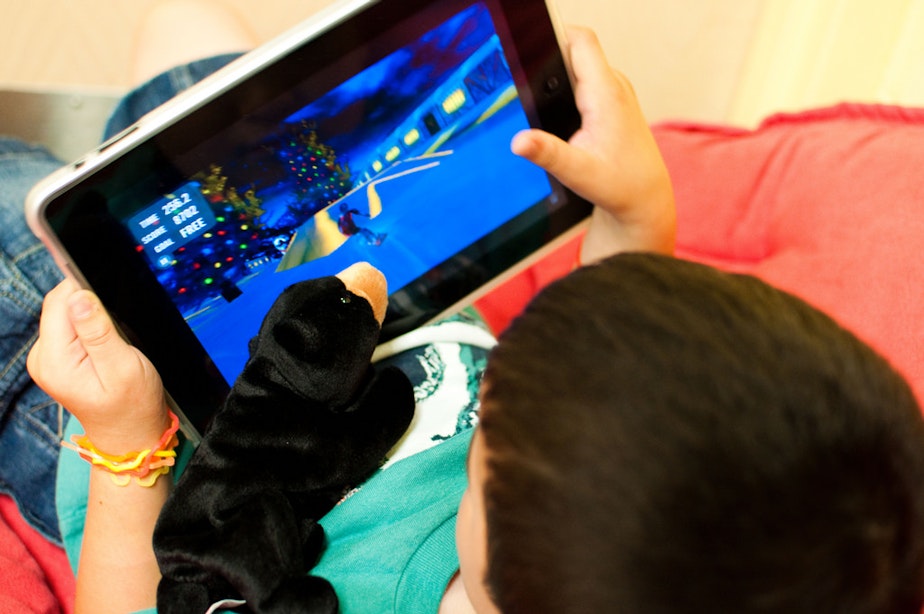Gaming addiction is real. Here's how to spot it

The World Health Organization has added “gaming disorder” to its list of diseases.
Possibly the most addictive game on the planet right now is "Fortnite." More than 200 million people play it – and some of them can’t stop.
Hilarie Cash is the chief clinical officer of the reSTART clinic, which treats people for the disorder. We interviewed her about how a love of gaming can lead to something worse. Here are some highlights.
Bill Radke interviews Hilarie Cash, chief clinical officer of Redmond’s reSTART clinic
The difference between love and addiction
The research is showing that once you are spending – whether you are a child or an adult – more than two to four hours in personal entertainment with screens, you’re likely to start showing signs of addiction.
Signs of addiction really mean that you feel compelled to play the game in spite of its negative consequences. Those might be conflict at home with your family, failure to get your work done, when you’re at work being unproductive. It might be health consequences: severe sleep deprivation, depression, anxiety.
There’s a whole slew of things that you look for to see if a person is really not functioning well, and that’s how you have to judge it. Are they really getting everything done that they need to? Are they healthy? Are they connecting with family and the outdoors? Are they physically moving?
When being a hero has bad effects
When you’ve got a mix in the game of pro-social, appealing elements along with violence, it can actually sometimes have the worst effect on people. So if you the play the game where you’re the hero but you’re killing everybody, it really can screw with your ideas about what is moral behavior.
We know that empathy has been going down over the last couple of decades and it does seem to be somewhat correlated with video game play and violent video games in particular.
How reSTART treats gaming addiction
When they first come to reSTART, they’re going to spend a minimum of two months completely away from screens – not just video games.
That allows the brain to return to normal functioning, go through withdrawal symptoms: irritability, difficulty sleeping, poor concentration, increased anxiety, restlessness, boredom – they’re so used to over stimulation that they feel extremely bored for a good long time.
And it’s fascinating to see how once a month or so has passed – so the heaviest part of that detox has occurred – they start being able to click into creativity and resourcefulness and start figuring out constructive ways to fill their time. But initially they feel horribly bored.
Many of them really can’t wrap their heads around the idea that they should never go back to gaming.
From a physiological point of view, they’re always going to be at risk if they return to playing video games for reactivating those neural pathways which have been over developed. And if that occurs, they could fall right back into the old patterns.
One of the big problems with the overuse of video games is not only what’s going on physiologically, but isolation. When the focus of your life becomes the video game, you start giving up so much and not developing in ways that are really critical.
Further reading: What Research Says About Video Games And Violence In Children
Produced for the web by Kara McDermott




